标签:使用 构建流程 color pac 重复 远程仓库 span 本地 开源
回顾下 Maven 的构建流程,如果没有私服,我们所需的所有 jar 包都需要通过 Maven 的中央仓库或者第三方的 Maven 仓库下载到本地,当一个公司或者一个团队所有人都重复的从 Maven 仓库下载 jar 包,这样就加大了中央仓库的负载和浪费了外网的带宽,如果网速慢的话还会影响项目的进程。
私服是在局域网的一种特殊的远程仓库,目的是代理远程仓库及部署第三方构件。有了私服之后,当 Maven 需要下载 jar 包时,先请求私服,私服上如果存在则下载到本地仓库。否则,私服直接请求外部的远程仓库,将 jar 包下载到私服,再提供给本地仓库下载。
1. nexus 安装
我们可以使用专门的 Maven 仓库管理软件来搭建私服,这里我们使用 Nexus。下载地址:https://help.sonatype.com/repomanager2/download。
Nexus 专业版是需要付费的,这里我们下载开源版 Nexus OSS,最新的是 OSS3.x,我们选择稳定的版本 2.x。
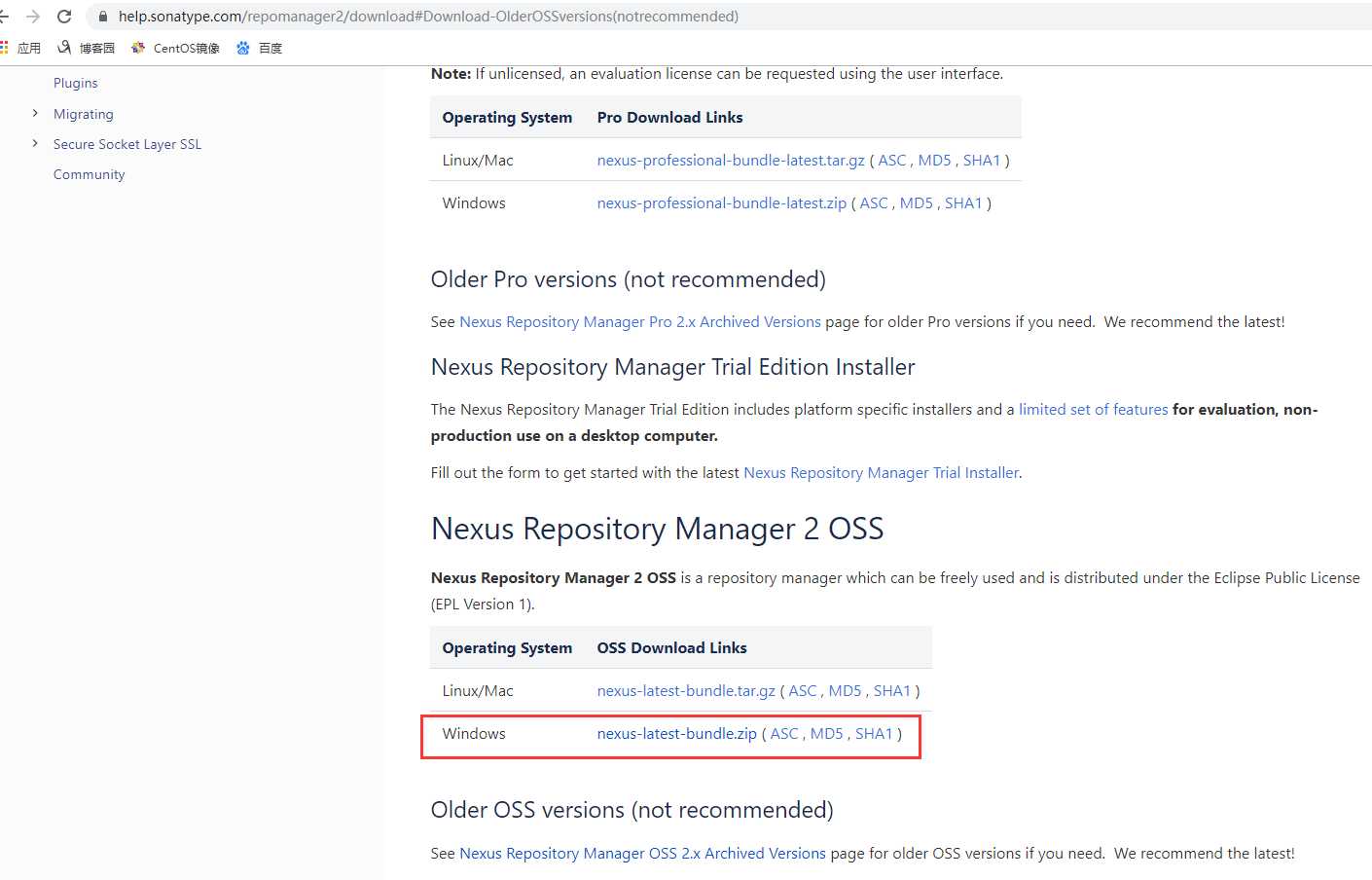
下载完成后,我们将压缩包解压到F盘,形成以下目录

接下来我们启动 nexus:
1)以管理员身份打开 cmd,进入到 bin 目录,先执行 nexus install 命令

再执行 nexus start 命令

2)打开浏览器,访问 http://localhost:8081/nexus
3)点击右上角Log in,使用用户名:admin,密码:admin123登录

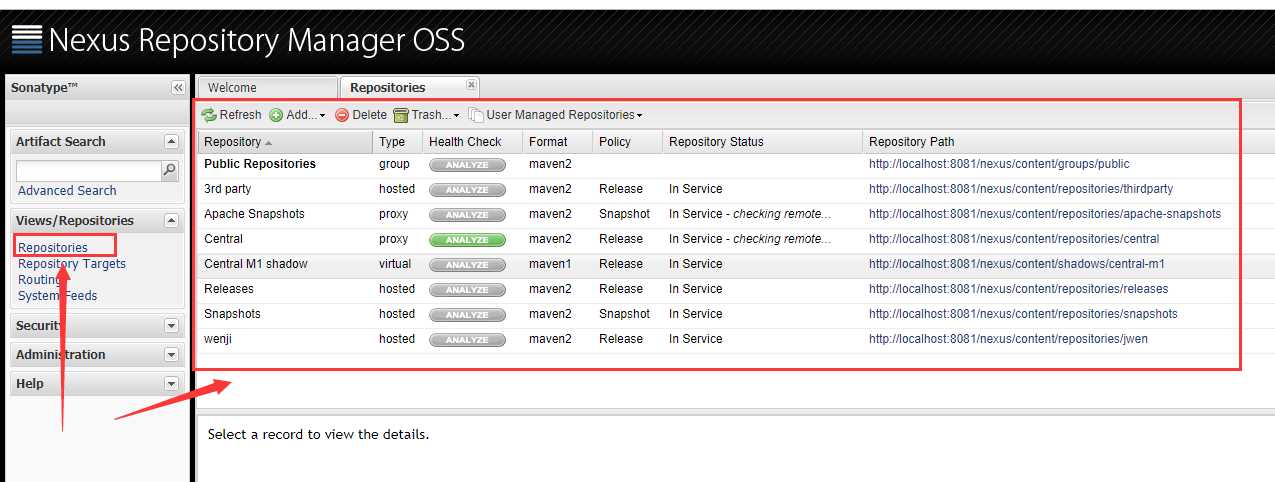
2. nexus 服务器仓库类型
1)hosted:是本地仓库,用户可以把自己的一些jar包,发布到hosted中,比如公司的第二方库
2)proxy:代理仓库,它们被用来代理远程的公共仓库,如maven中央仓库。不允许用户自己上传jar包,只能从中央仓库下载
3)group:仓库组,用来合并多个hosted/proxy仓库,当你的项目希望在多个repository使用资源时就不需要多次引用了,只需要引用一个group即可
4)virtual:虚拟仓库基本废弃了。
3. nexus 预置仓库
1)Central:该仓库代理 Maven 中央仓库,其策略为 Release,因此只会下载和缓存中央仓库中的发布版本构件。
2)Releases:这是一个策略为 Release 的宿主类型仓库,用来部署正式发布版本构件
3)Snapshots:这是一个策略为 Snapshot 的宿主类型仓库,用来部署开发版本构件。
4)3rd party:这是一个策略为 Release 的宿主类型仓库,用来部署无法从 Maven 中央仓库获得的第三方发布版本构件,比如 IBM 或者 oracle 的一些jar包(比如 classe12.jar),由于受到商业版权的限制,不允许在中央仓库出现,如果想让这些包在私服上进行管理,就需要第三方的仓库。
5)Public Repositories:一个组合仓库
4. 在 nexus 建立仓库
1)建库,Add -->Hosted Repository
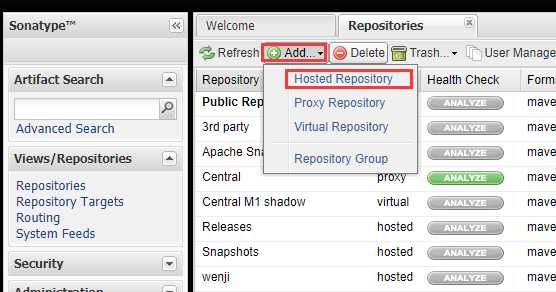
2)填写仓库信息

(1)Respository ID:仓库编号
(2)Repository NAME:仓库名称
(3)Repository Type:仓库类型
(4)Repository Policy:仓库策略
(5)Default Local Storage Location:仓库路径(不填的话默认 nexus 安装的路径)
(6)Deployment Policy:发布策略
3)然后选择 Public Repositories,打开 configuration 选项卡,将自己创建的仓库添加到 group
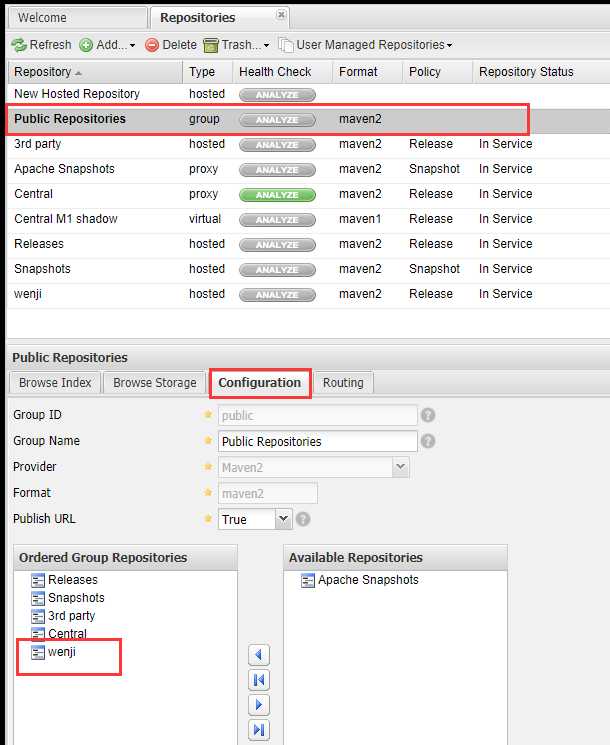
5. 配置远程仓库的几种方法
1)在 pom 文件里配置多个远程仓库
<repositories> <repository> <id>nexus</id> <name>nexus私服URL</name> <url>http://localhost:8081/nexus/content/groups/public/</url> </repository> <repository> <id>aliyun</id> <name>阿里云</name> <url>http://maven.aliyun.com/nexus/content/groups/public/</url> </repository> </repositories>
缺点:每个项目都需要配置,固可以在 settings.xml 配置全局
2)在 settings.xml 里配置全局
<profiles> <profile> <id>my</id> <repositories> <repository> <id>aliyun</id> <name>Nexus aliyun</name> <url>http://maven.aliyun.com/nexus/content/groups/public</url> <snapshots> <enabled>true</enabled> </snapshots> <releases> <enabled>true</enabled> </releases> </repository> <repository> <id>nexus</id> <name>nexus私服URL</name> <url>http://localhost:8081/nexus/content/groups/public/</url> <snapshots> <enabled>true</enabled> </snapshots> <releases> <enabled>true</enabled> </releases> </repository> </repositories> </profile> </profiles> <activeProfiles> <activeProfile>my</activeProfile> </activeProfiles>
6.配置镜像
在 settings.xml 里配置阿里云镜像加速默认的远程仓库
<mirrors> <mirror> <id>aliyun</id> <mirrorOf>central</mirrorOf> <name>Nexus aliyun</name> <url>http://maven.aliyun.com/nexus/content/groups/public</url> </mirror> </mirrors>
全局默认的远程仓库:
<repository> <id>central</id> <url>https://repo1.maven.org/maven2/</url> </repository>
由于配置 <mirrorOf>central</mirrorOf>,所有从 center(默认远程仓库)去拉取依赖都将重定向从 aliyun 镜像中去拉取依赖
注:mirrorOf 匹配的都是 repository 的 id
<mirrorOf>*</mirrorOf> :匹配所有仓库请求,即将所有的仓库请求都转到该镜像上
<mirrorOf>repo1,repo2</mirrorOf> :将仓库 repo1 和 repo2 的请求转到该镜像上,使用逗号分隔多个远程仓库
<mirrorOf>*,!repo1</mirrorOf> : 匹配所有仓库请求,repo1 除外(将继续从 repo1 请求),使用感叹号将仓库从匹配中排除
7.加速远程仓库的3种方式
1)如果没有 nexus 私服,可以使用 aliyun 镜像来加速默认的官方远程仓库
在 settings.xml 里配置:
<mirrors> <mirror> <id>aliyun</id> <mirrorOf>central</mirrorOf> <name>Nexus aliyun</name> <url>http://maven.aliyun.com/nexus/content/groups/public</url> </mirror> </mirrors>
2) 如果有 nexus 私服,可以同时使用 aliyun 镜像和私服远程仓库,aliyun 镜像用于加速官方仓库,私服用于加载第三方 jar 包和自己 deploy 的 jar 包
在 setting.xml 里配置:
<mirrors> <mirror> <id>aliyun</id> <mirrorOf>central</mirrorOf> <name>Nexus aliyun</name> <url>http://maven.aliyun.com/nexus/content/groups/public</url> </mirror> </mirrors>
<profiles> <profile> <id>my</id> <repositories> <repository> <id>nexus</id> <name>nexus私服URL</name> <url>http://127.0.0.1:8081/repository/maven-public/</url> <snapshots> <enabled>true</enabled> </snapshots> <releases> <enabled>true</enabled> </releases> </repository> </repositories> </profile> </profiles>
<activeProfiles> <activeProfile>my</activeProfile> </activeProfiles>
3)如果私服 nexus 里可以联网,直接新建 repository,设置远程代理到 aliyun,然后 settings.xml 里配置
<profiles> <profile> <id>my</id> <repositories> <repository> <id>nexus</id> <name>nexus私服URL</name> <url>http://127.0.0.1:8081/repository/maven-public/</url> <snapshots> <enabled>true</enabled> </snapshots> <releases> <enabled>true</enabled> </releases> </repository> </repositories> </profile> </profiles> <activeProfiles> <activeProfile>my</activeProfile> </activeProfiles>
8. 如果想将自己的项目打成的 jar 包 deploy 到 nexus 服务器上,需要配置 distributionManagement
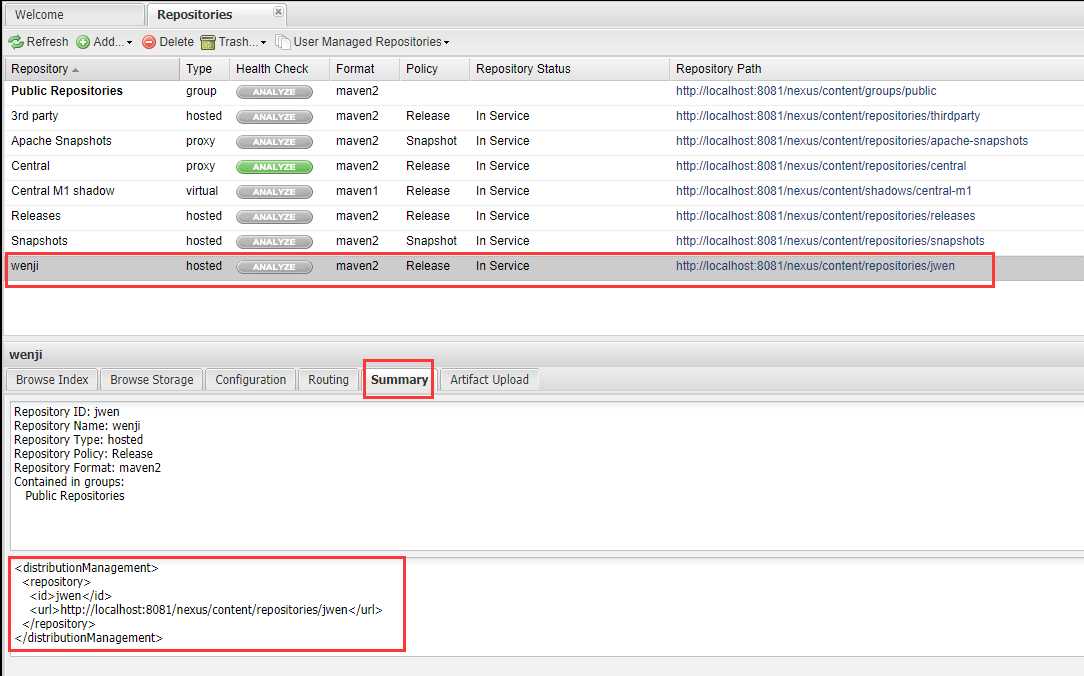
<distributionManagement> <repository> <id>jwen</id> <url>http://localhost:8081/nexus/content/repositories/jwen</url> </repository> </distributionManagement>
9. 如何使用 3rd party 上传第三方 jar 包
在Repository列表中,选中 3rd party,选中 artifact upload,如下图所示:
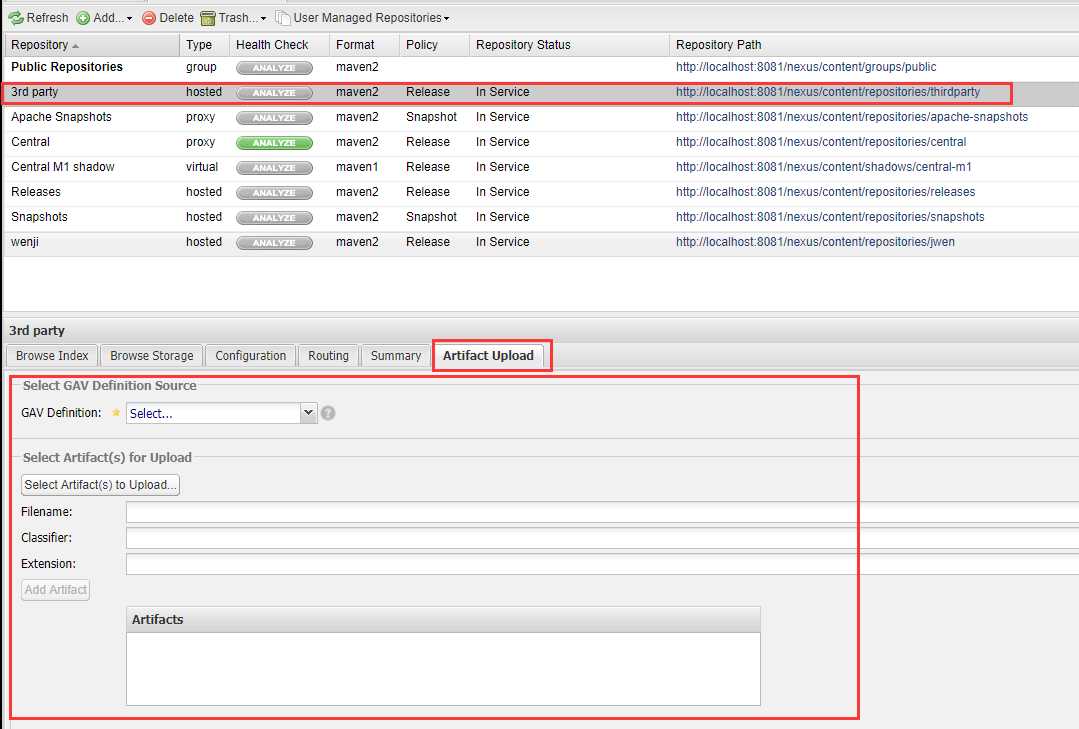
选择 GAV Defini3ion:GAV Parameters,Auto Guess 打钩。
在下方输入 JAR 包对应的 Group、Artifact、Version,Packaging 选择 JAR 格式。

点击 select Artifact(s) to upload 按钮,选择要上传的 JAR 包
点击 Add Artifact 按钮,添加 JAR 包
点击 Upload Artifact(s) 按钮,加载上传 JAR 包
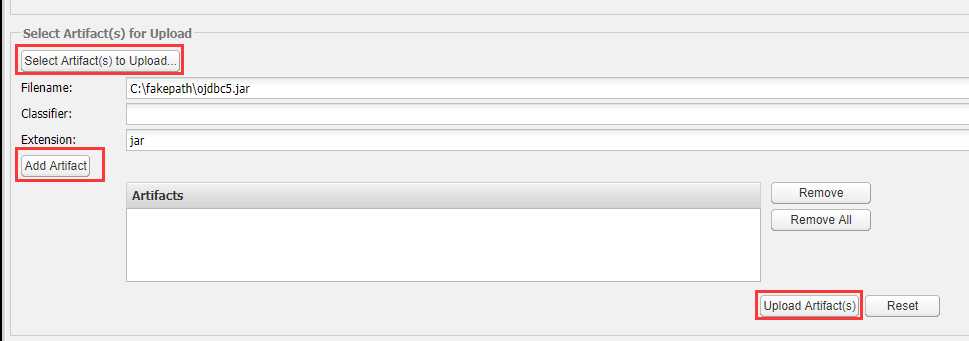
标签:使用 构建流程 color pac 重复 远程仓库 span 本地 开源
原文地址:https://www.cnblogs.com/jwen1994/p/11370759.html